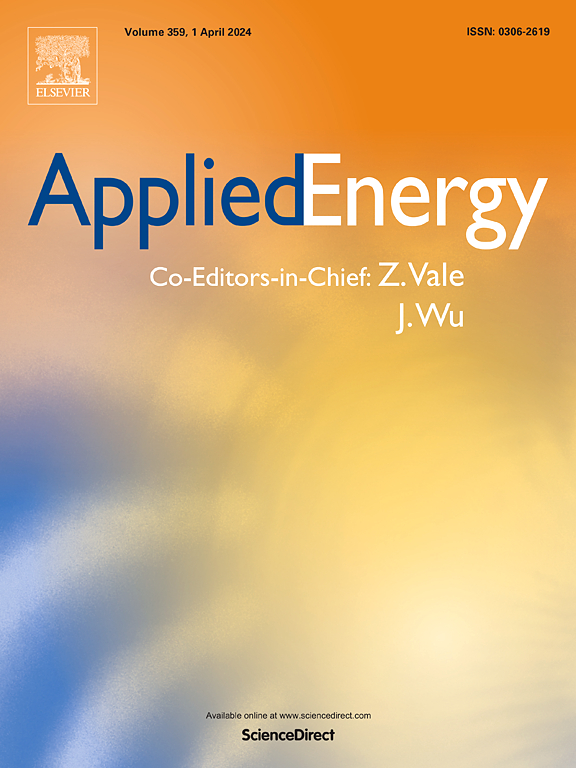Study on two-phase transport and performance characterization in orientational structure proton exchange membrane fuel cells at high water content
IF 10.1
1区 工程技术
Q1 ENERGY & FUELS
引用次数: 0
Abstract
With advances in catalyst technology, the power of commercial fuel cells has generally enhanced, imposing higher demands on water management. Clarifying the gas-liquid flow and performance characteristics under high water content is critical for improving the dynamic stability and lifetime of the fuel cell. In this study, the evolutions of gas-liquid flow and the performance of fuel cells at high water content are investigated using water injection. Differences in gas-liquid distribution and performance between the orientational and straight channels under high water content are discussed. Results show that the liquid water distribution of the orientational channels is more uniform compared to straight channels. The orientational plate has a blocking effect on the liquid droplets, and droplets first fill the channel and then flow downstream. Water mist dissipates faster in the orientational channels after switching to high voltages due to increased gas velocity induced by the orientational plate. In the cathode, the liquid water mainly forms film flow because of the low oxygen velocity, and the droplets in the orientational channels enable rapid movement driven by the upstream droplet pushing forces. Anode water injection improves membrane wettability and cell performance, suggesting anode water injection potential as a humidification method. The orientational channel demonstrates superior water retention, with the highest performance improvement observed during upstream water injection and achieving up to 95 % net power improvement. However, cathode water injection may degrade performance due to water flooding.
高含水量取向结构质子交换膜燃料电池的两相输运及性能表征研究
随着催化剂技术的进步,商用燃料电池的功率普遍增强,对水管理提出了更高的要求。弄清高含水量条件下的气液流动和性能特性,对提高燃料电池的动态稳定性和寿命至关重要。本文采用注水的方法,研究了高含水量条件下燃料电池的气液流动演变及性能。讨论了高含水率条件下定向通道与直线型通道气液分布及性能的差异。结果表明,定向通道的液态水分布比直线通道更为均匀。定向板对液滴有阻挡作用,液滴先填充通道,然后向下游流动。在切换到高压后,由于定向板引起的气速增加,水雾在定向通道中消散得更快。在阴极中,液态水由于氧流速低,主要形成膜流,定向通道中的液滴在上游液滴推力的驱动下快速运动。阳极注水提高了膜的润湿性和电池的性能,表明阳极注水电位是一种加湿方法。定向通道具有优异的保水性,在上游注水过程中,性能得到了最大的改善,净功率提高了95%。然而,阴极注水可能会因水淹而降低性能。
本文章由计算机程序翻译,如有差异,请以英文原文为准。
求助全文
约1分钟内获得全文
求助全文
来源期刊

Applied Energy
工程技术-工程:化工
CiteScore
21.20
自引率
10.70%
发文量
1830
审稿时长
41 days
期刊介绍:
Applied Energy serves as a platform for sharing innovations, research, development, and demonstrations in energy conversion, conservation, and sustainable energy systems. The journal covers topics such as optimal energy resource use, environmental pollutant mitigation, and energy process analysis. It welcomes original papers, review articles, technical notes, and letters to the editor. Authors are encouraged to submit manuscripts that bridge the gap between research, development, and implementation. The journal addresses a wide spectrum of topics, including fossil and renewable energy technologies, energy economics, and environmental impacts. Applied Energy also explores modeling and forecasting, conservation strategies, and the social and economic implications of energy policies, including climate change mitigation. It is complemented by the open-access journal Advances in Applied Energy.
 求助内容:
求助内容: 应助结果提醒方式:
应助结果提醒方式:


